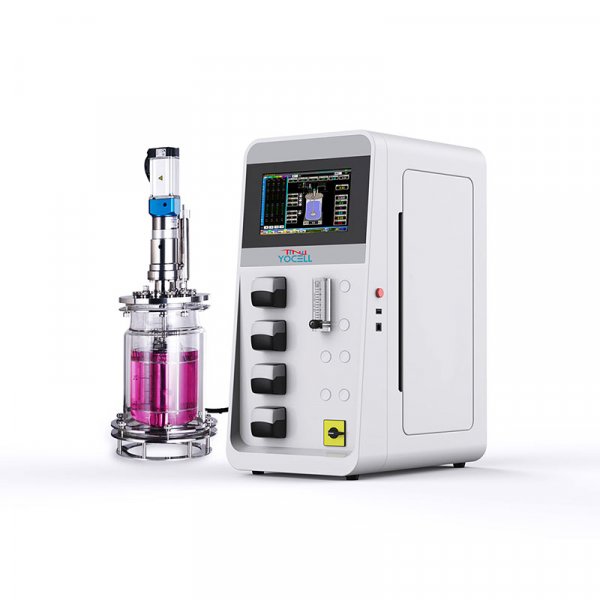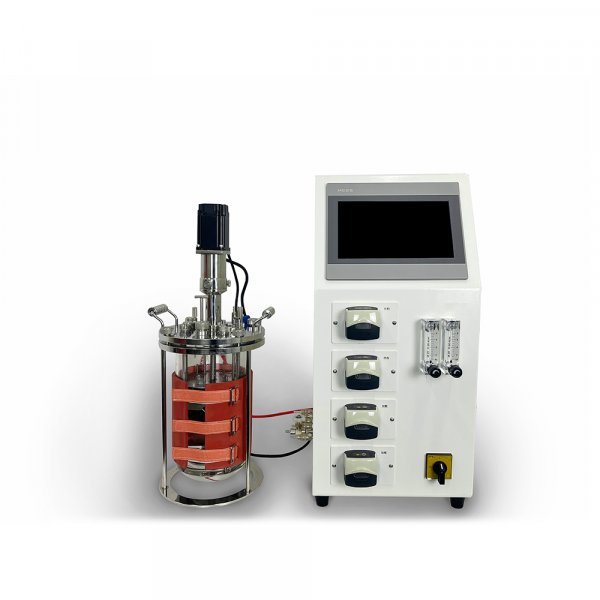Chromatography can be traced back to more than 100 years ago, when the Russian botanist Tswett separation of plant pigments used experimental methods, he will dissolve the petroleum ether extract liquid into the vertical glass tube containing calcium carbonate, and then add petroleum ether to let it flow freely, the results of the pigment components separated from each other to form a variety of different color bands. Tswett then used the Greek words chroma(color) and graphos(spectrum) to describe his experimental method, which is now called chromatography. In the 1930s, chromatography began to be widely studied and applied, and the wide application of high performance liquid chromatography began in the 1970s.
Principle
It is different from the general liquid chromatography which is only used for qualitative or quantitative analysis. The purpose of preparative liquid chromatography is to extract and purify the monomer of the product. Compared with traditional purification methods (such as distillation, extraction), preparation of liquid phase is a more effective separation method, so it is widely used in the extraction and purification of samples and products. With the increasing demand for high-purity components in the fields of synthesis, phytochemistry, biochemistry and pharmaceuticals, the application fields of preparative liquid chromatographs are also expanding rapidly.
Just as oil and water are immiscible, molecules themselves have a similar or repulsive property called polarity, and the more regular, symmetrical, and homogeneous the atoms in a molecule are, the less polar the molecule will be. The more similar the polarity of molecules, the more likely they are to fuse together. Oil is a small polar molecule, and water and ethanol are both large polar molecules, oil can not dissolve in water but ethanol can, which is said in chemistry, "similar phase dissolution principle." In addition, similar phase dissolution will also appear in the solid-liquid system, just like the small polarity of mercury can not infiltrate the large polarity of glass, but can infiltrate the same small polarity of aluminum.
Therefore, the basic principle of preparing liquid chromatograph is adsorption and elution, when a molecule is adsorbed on the surface of a solid (called the stationary phase in the chromatography), it can be dissolved into the liquid with a liquid (called the mobile phase in the chromatography), then according to the polarity relationship between the mobile phase and the stationary phase is defined:
If the polarity of the stationary phase is greater than that of the mobile phase, it is called normal-phase chromatography.
If the polarity of the stationary phase is less than that of the mobile phase, it is called reversed-phase chromatography.
The core separation component in the preparation of a liquid chromatography system is a chromatographic column equipped with packing, commonly used normal-phase column packing silica gel and alumina, etc., commonly used reversed-phase column packing C18 silica gel, phenyl silica gel, cyano-silica gel and so on. Due to the difficulty of preparing reversed-phase silica gel, the price of normal-phase columns is much lower than that of reversed-phase columns.
In the separation process, the positive phase column uses the mobile phase with the polarity from small to large for elution, and the reverse phase column uses the mobile phase with the polarity from large to small for elution. The machine will automatically take a very small amount of eluent using its own high performance liquid chromatography for real-time detection, determination of the ultraviolet absorption of organic molecules in the eluent (generally 214, 254nm), and in the form of a chromatogram real-time display on the screen.
After separation, the eluent can be selected to be continuously discharged, using containers such as beakers and conical bottles to pick up, or you can choose to use test tubes to pick up segments.
Application method
1. Pretreatment
The reaction liquid at the end of the reaction is first treated according to the normal process, and then dissolved with a low boiling point solvent such as methylene chloride or ethyl acetate. If it is a large polar molecule, acetonitrile or methanol can also be used. Try to dissolve all the substances to be purified, and then take a small amount of dissolved liquid to climb the plate first, determine the approximate polar relationship between the target product and the by-product, and estimate the flow compatibility ratio used. Ethyl acetate - petroleum ether, dichloromethane - methanol are used for small polarity, and acetonitrile - water is used for large polarity.
The solution to be treated is evaporated to dryness and dissolved with the corresponding single solvent, after which 50-100 times the dry weight of the packing of the corresponding column packing is added and evaporated to dryness using a rotary evaporator to uniformly load the substance to be separated onto the packing.
The packing material attached to the separation is installed in the packing tube, and the outlet of the packing tube is added to the liquid inlet of the chromatographic column. Turn on the machine and wash the column for 5-10 minutes using the lowest (positive) or highest (reversed) polarity.
2. Formal separation
Turn on the machine and set the discharge mode to tube access or continuous access. Adjust the polarity of the mobile phase, the positive phase column from small to large, the reverse phase column from large to small, slowly increase the polarity, while observing the UV absorption curve on the screen (because ethyl acetate has a strong absorption at 214nm, so when using ethyl acetate as a mobile phase, the UV absorption wavelength should be set to 254nm and 365nm), when the curve suddenly rises, It means that a substance has been separated, and at this time, if the continuous liquid discharge mode is selected, it needs to be taken, and the system will begin to drain liquid to the test tube at this time. At the same time, do not increase the polarity, so as not to eluate substances with different polarities and cause pollution. After elution, the polarity continues to increase until all substances are separated.
At this time, if it is tube access, the machine will show the test tube at different positions is the peak of the liquid, and the continuous liquid discharge needs to be recorded by itself. After that, LC-MS was used to detect target molecules. Evaporation solvent, end of use.
3. Cautions
High concentration of methanol will dissolve silica gel, so try to avoid the use of methanol when preparing samples.
Methanol is very polar, and when used with dichloromethane, the volume ratio should not exceed 1:10, otherwise it will cause silicone in the product
The mobile phase of the reversed phase column generally selects acetonitrile-water, starting from pure water to pure acetonitrile
The positive phase column is generally disposable, and harmless treatment can be carried out after use
Reverse columns and fillers are very expensive and need to be rinsed after use and stored carefully
The use of reverse-phase mobile phase in the positive phase column and the use of positive phase mobile phase in the reverse-phase column will cause the substance to be separated to be eluted directly, which needs attention.



